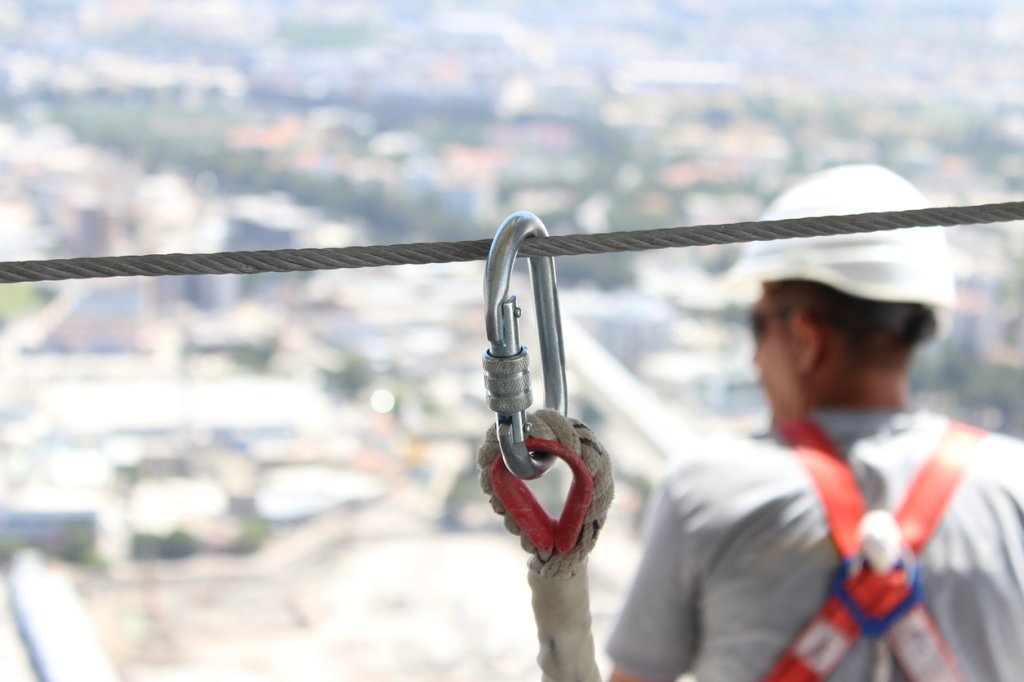Falls in Construction Safety Talk
In 2018, OSHA published its Fatal Four top causes of construction fatalities, citing falls as number one. Falls are a leading cause of injury and death for construction workers.
Let’s review some important best practices you can use today to help prevent falls at your jobsite.
Falls from a height
Falls on the job site come in two categories: falls from a height and falls to the same level.
All falls from any elevation above ground level are considered falls from a height, and all work above six feet off the ground is considered working from a height. Falls in this category can include falls from:
Roof tops
Scaffolding
Stilts
Cherry pickers
Ladders
Drilling platforms
Stairs
Shelving
Falls to the same level
Falls to the same level are typically slips and trips the occur at the level the individual is walking, with no height difference. While there is less risk of fatality in this category, major and sometimes permanent injuries can be the result of a fall to the same level.
Falls to the same level can be caused by:
Spills
Unlevel grades
Slick surfaces
Improper footwear
Improper stairs
Obstructions
Poor lighting
How to plan for safer work on the jobsite
Make your work plan ahead of time. This is especially important for tasks at heights, with their increased risks.
By planning ahead of time, we make safety a priority. Determine the resources and protective measures you will need to perform the work safely. This includes:
Equipment
Personnel
Tools
Weather conditions
Lighting
Safety lines
Rails
Scaffolds
Cherry pickers

Make sure you have the safety training your need before starting work on your tasks. Plan on reviewing proper use of the equipment and safety gear you'll be using ahead of the task to keep the necessary procedures top of mind.
Balancing excessive weight on ladders, stilts, and scaffolds is a risky business. Elevation changes the worker’s center of gravity and may affect their balance. The additional weight in shingles, lumber, drywall mud, paint, or other materials they may be holding increases the amount of effort needed to stabilize themselves above ground.
Be flexible for safety
Weather and lighting conditions can change quickly, and power could go off unexpectedly. There are ideal conditions for working from heights, and there are conditions that are less than ideal.
Don't attempt to work when conditions are poor or you are tired, sick, or distracted. Be alert and prepared to halt work and correct an unsafe situation or reschedule for another day, when safer conditions resume.
How to ensure a safer jobsite
All necessary safety gear needs to be onsite and easily accessible for every task that is six feet or more above the grade or platform. Allocate enough time per task for workers to properly equip their safety gear and make sure all required safeguards are in place prior to beginning the work.
Survey the surface of the work area as well as the surface of the area below. Make sure elevated work surfaces ares:
Level
Stable
Clear of debris
Grippy
Proper size
Do not compromise when it comes to making scaffolds, ladders, and decks level and stable. Help employees learn the proper way to set up ladders and scaffolds, and make sure they understand unsafe or risky behaviors. For example, many falls from ladders and scaffolds occur when someone overreaches from a ladder, when the safest thing to do is reposition the ladder closer to the target.
Regularly check safety gear and essential equipment
Nothing lasts forever, and even ladders wear out. All of your jobsite equipment that is regularly set up, torn down, transported, and set up again should be inspected each time it is used to prevent failure and injury.
Be aware of weight limits
Scaffolds, ladders, lifelines, and all equipment for working at a height all have specified weight limits to work within. If a ladder has a 250 lb. weight limit, that weight limit should be strictly observed. if workers use the ladder over the ladder capacity, it can lead to premature failure and possible injury. If you need a ladder with a higher weight limit, get the right tool for the job.
Scaffold frames and platforms need to be evaluated consistently for cracks and breakage.
Find and schedule topics faster
Raken's toolbox talk app makes it easy to choose from a pre-loaded library (or upload your own), then schedule and assign topics for any project. We'd love to show you how in a demo and get you started on a free trial.